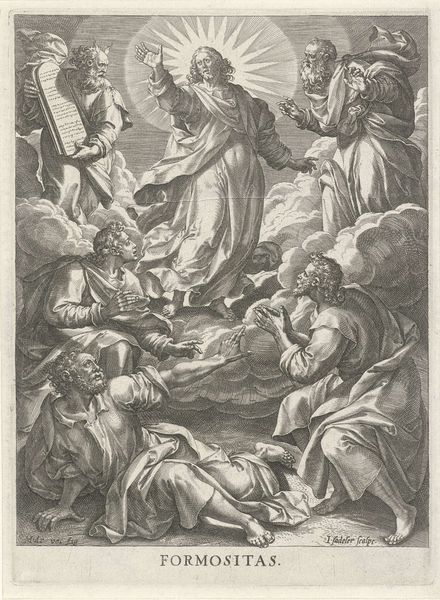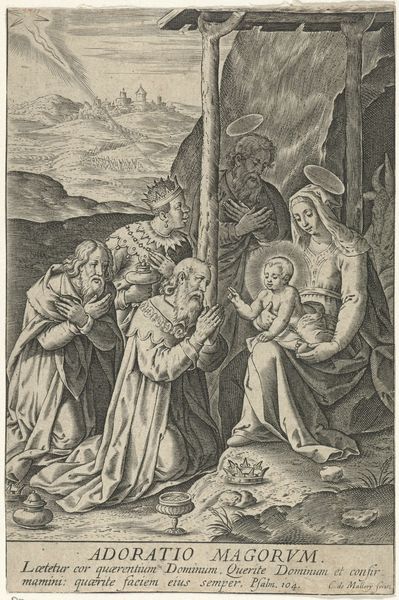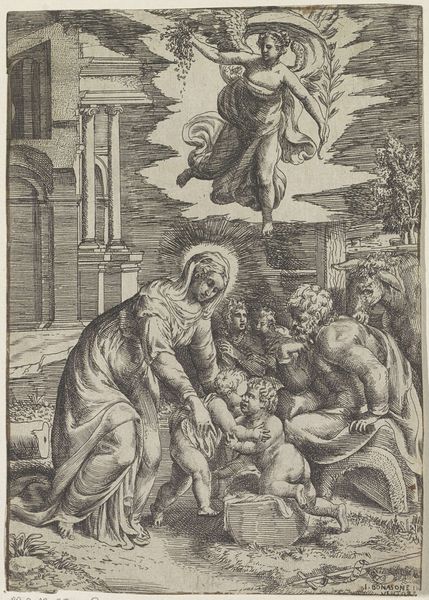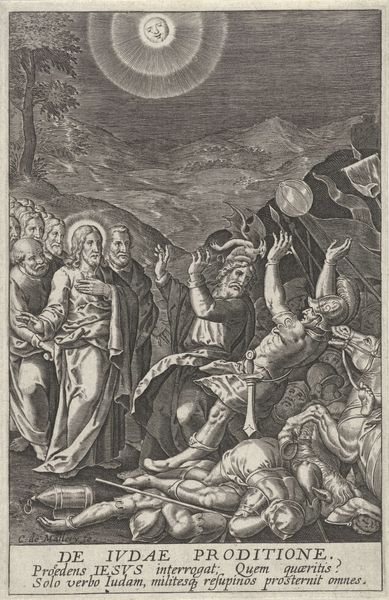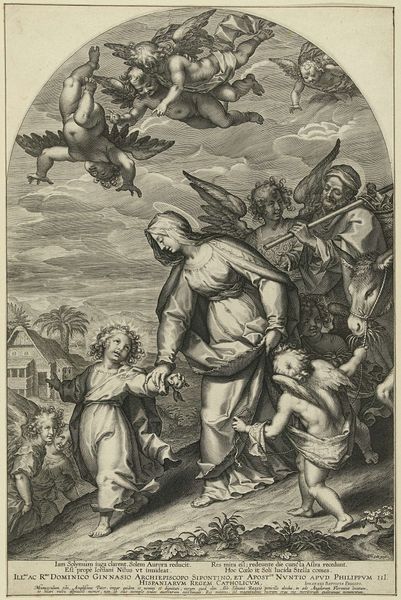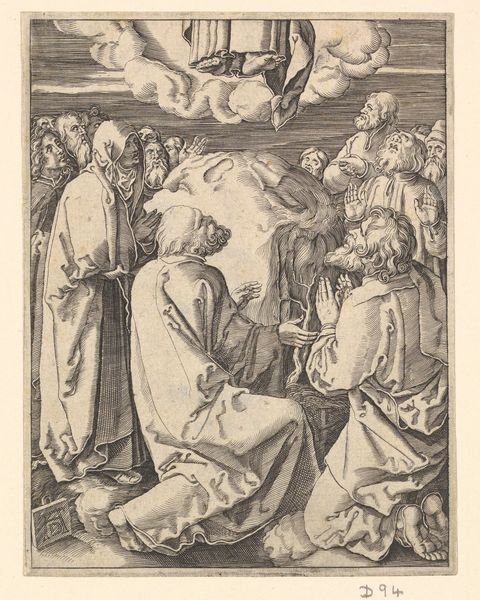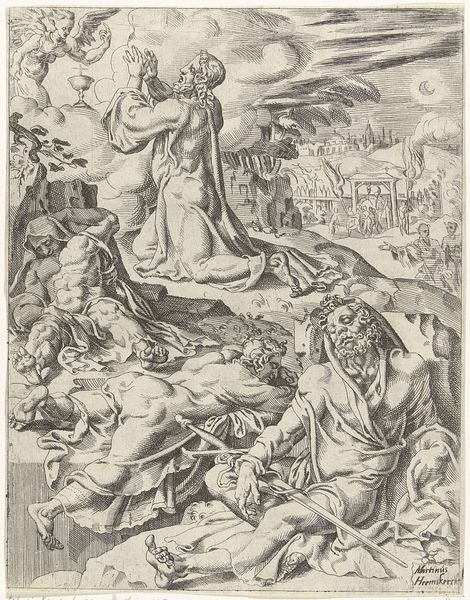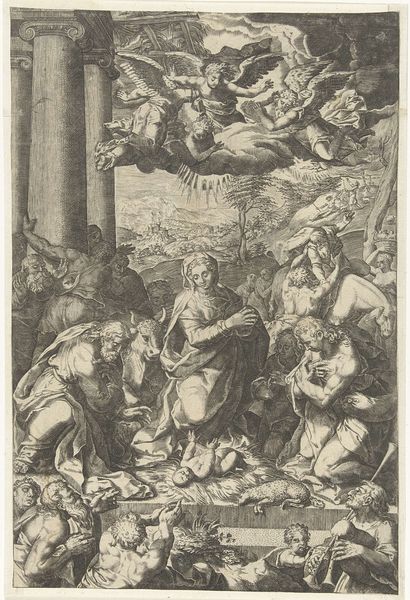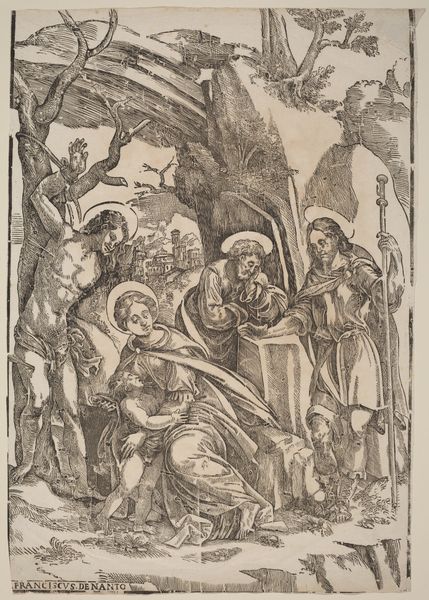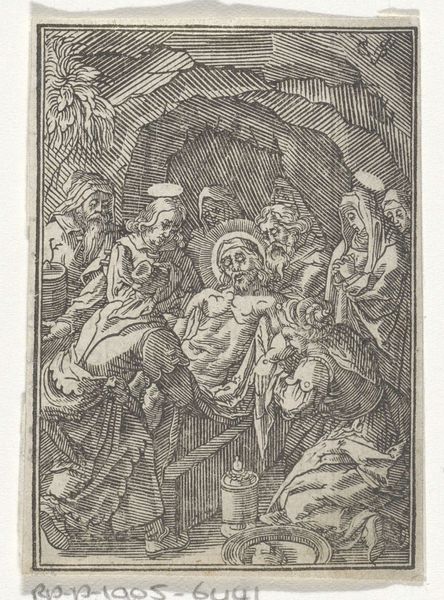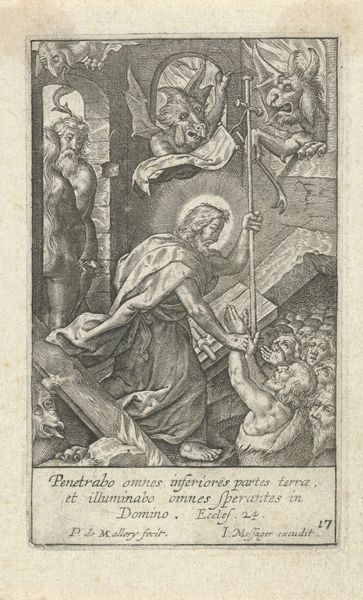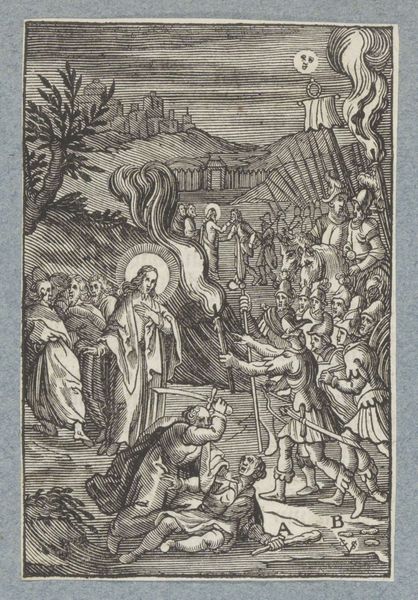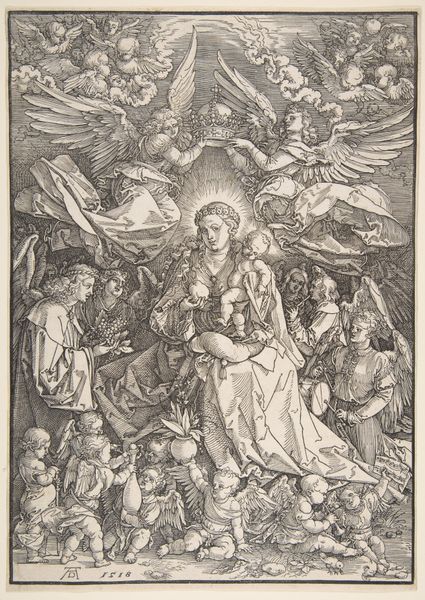
print, engraving
#
narrative-art
# print
#
landscape
#
figuration
#
northern-renaissance
#
engraving
Dimensions: width 54 mm, height 90 mm
Copyright: Rijks Museum: Open Domain
Curator: We're standing before "Christus leidt de Heilige familie terug naar Israël," or, "Christ Leading the Holy Family back to Israel." The work, created by Theodoor Galle sometime between 1581 and 1633, resides here at the Rijksmuseum. It's an engraving, a type of print, indicative of the Northern Renaissance style and very much illustrates the concept of narrative art, presenting an image steeped in figuration. Editor: It’s such a tender image, isn't it? Despite the rather serious subject, the way the figures are arranged, especially Christ reaching back toward Mary... It evokes such warmth and familial love, doesn’t it? Almost dreamlike. Curator: The engraving would have been reproduced and distributed widely, playing a role in disseminating religious iconography and reinforcing certain theological perspectives within the public sphere during that time. Prints offered a means to access art and information for those who may not have had access to painting, sculpture, or travel. Editor: It also shows, I think, how deeply intertwined faith and everyday life were. But it makes me wonder, did folks really imagine angels hovering, quite so palpably, over the countryside? What kind of relationship with the Divine does an image like this foster? Does it bring Heaven closer, or make it even more unknowable? Curator: Interesting question, yes. The inclusion of those cherubic angels dropping flowers suggests the divine favor accompanying their journey. It creates a visually rich scene, intending to inspire piety, but one could argue such overt divine presence could alienate as much as it inspires. But there’s definitely more to it: this composition, through print culture, served ideological functions tied to religious and social authorities, so seeing its widespread impact reveals much about those eras and societies. Editor: Absolutely. The artist certainly imbued this scene with an earnestness, but from a purely compositional point of view, I’m still moved by the intimate family dynamic set against the wide-open landscape. It is like they are moving back into history. Curator: And thinking about how a piece like this interacts with contemporary viewers now helps to build up a broader dialogue between then and now. Editor: I couldn’t agree more. The image’s quiet intimacy offers a sense of connection across centuries.
Comments
No comments
Be the first to comment and join the conversation on the ultimate creative platform.
